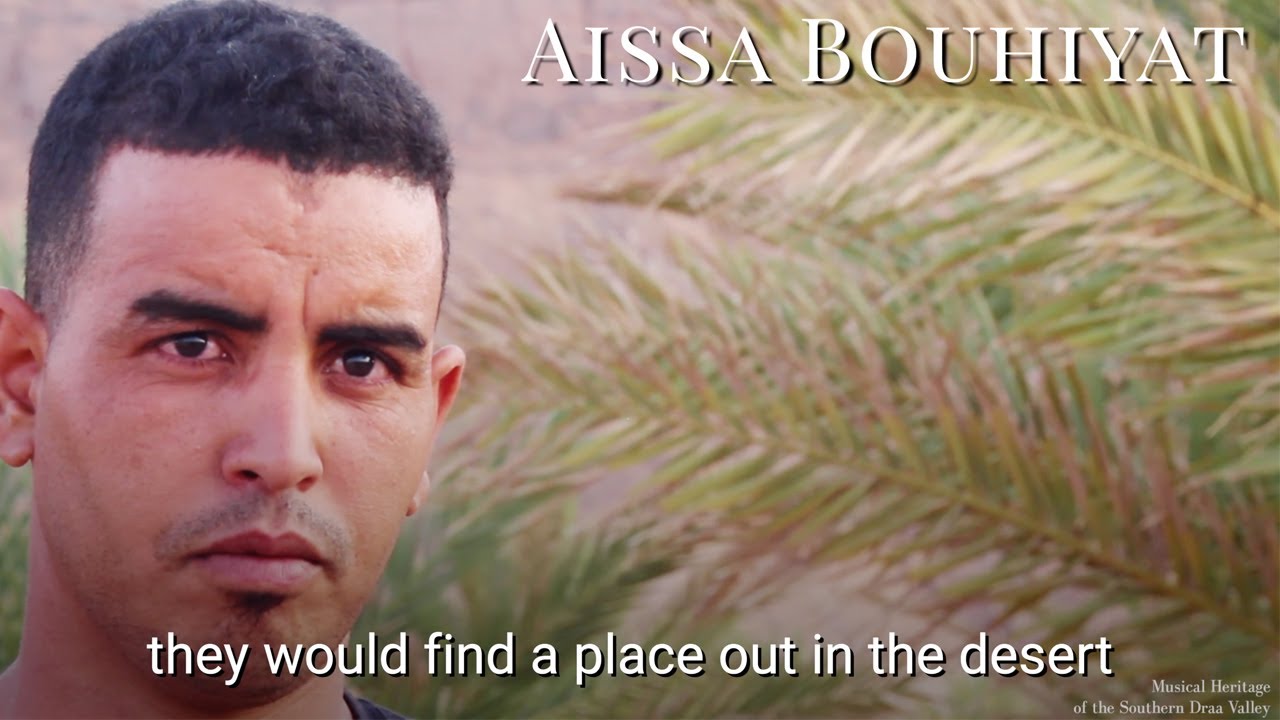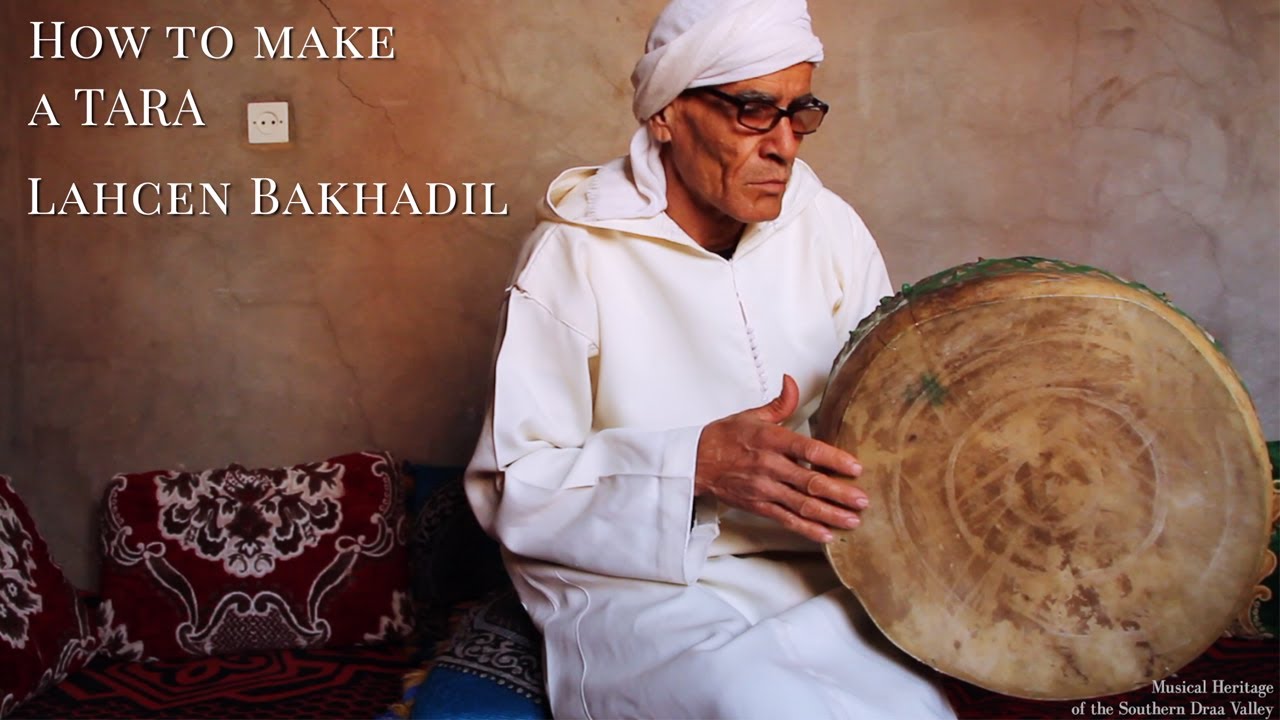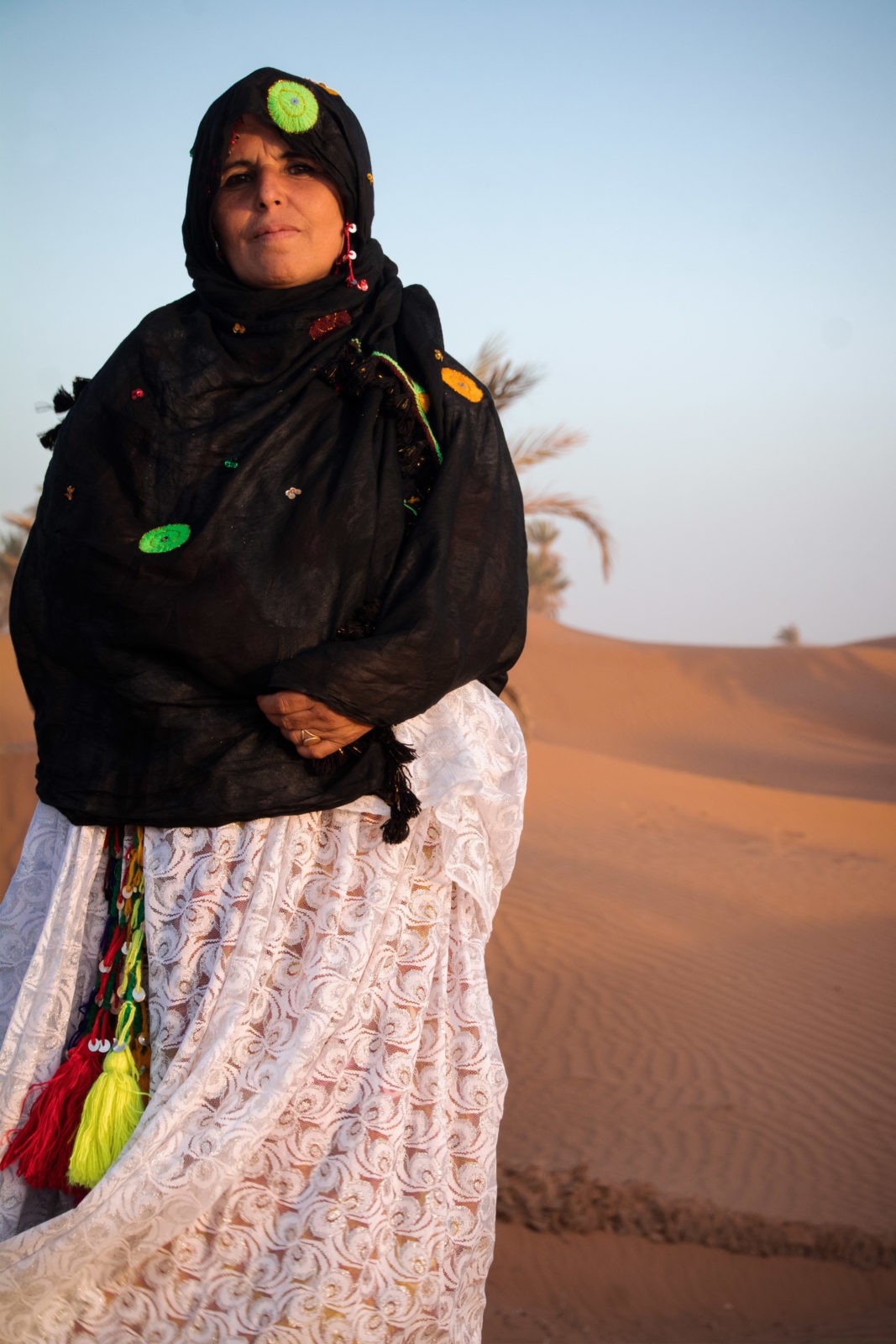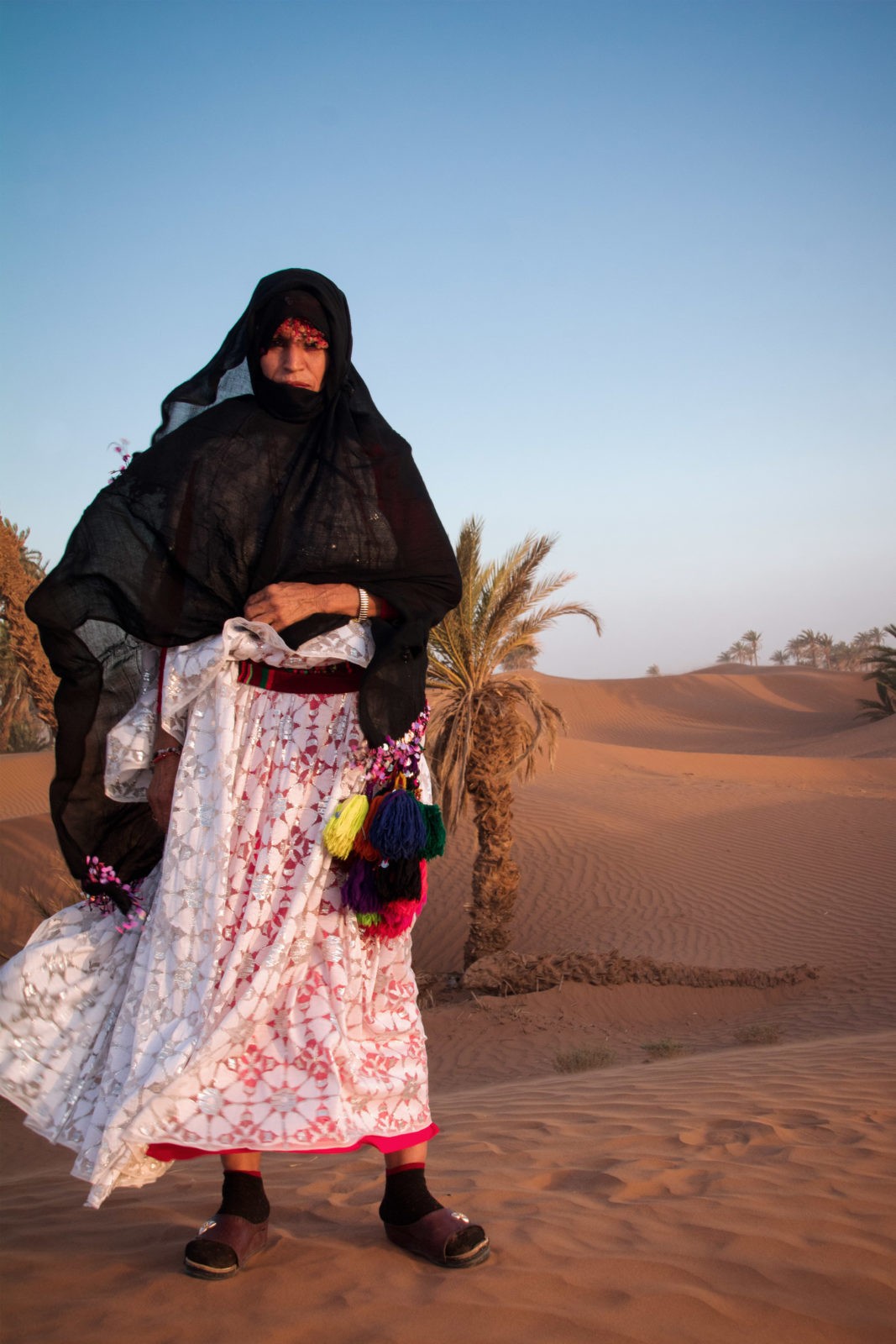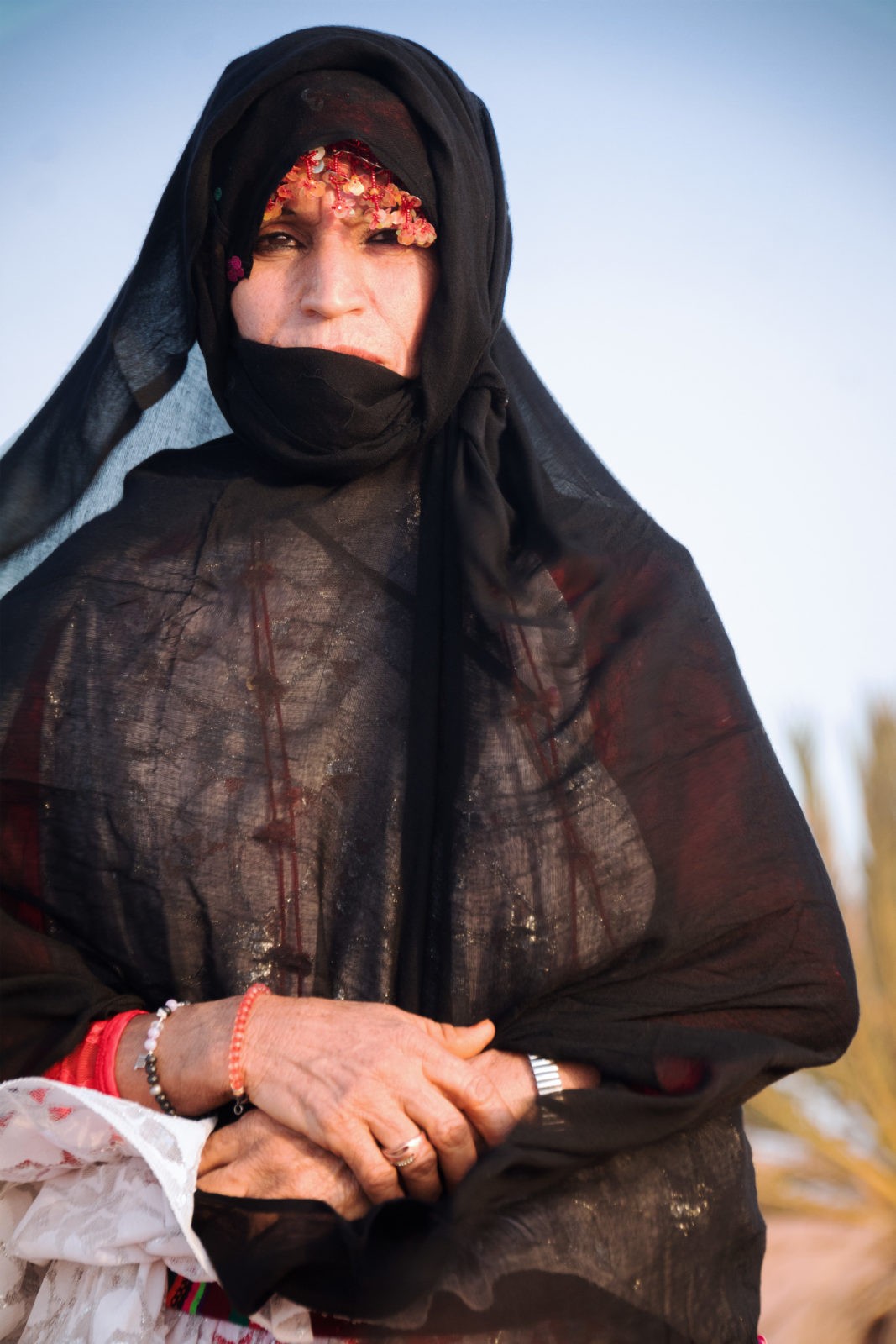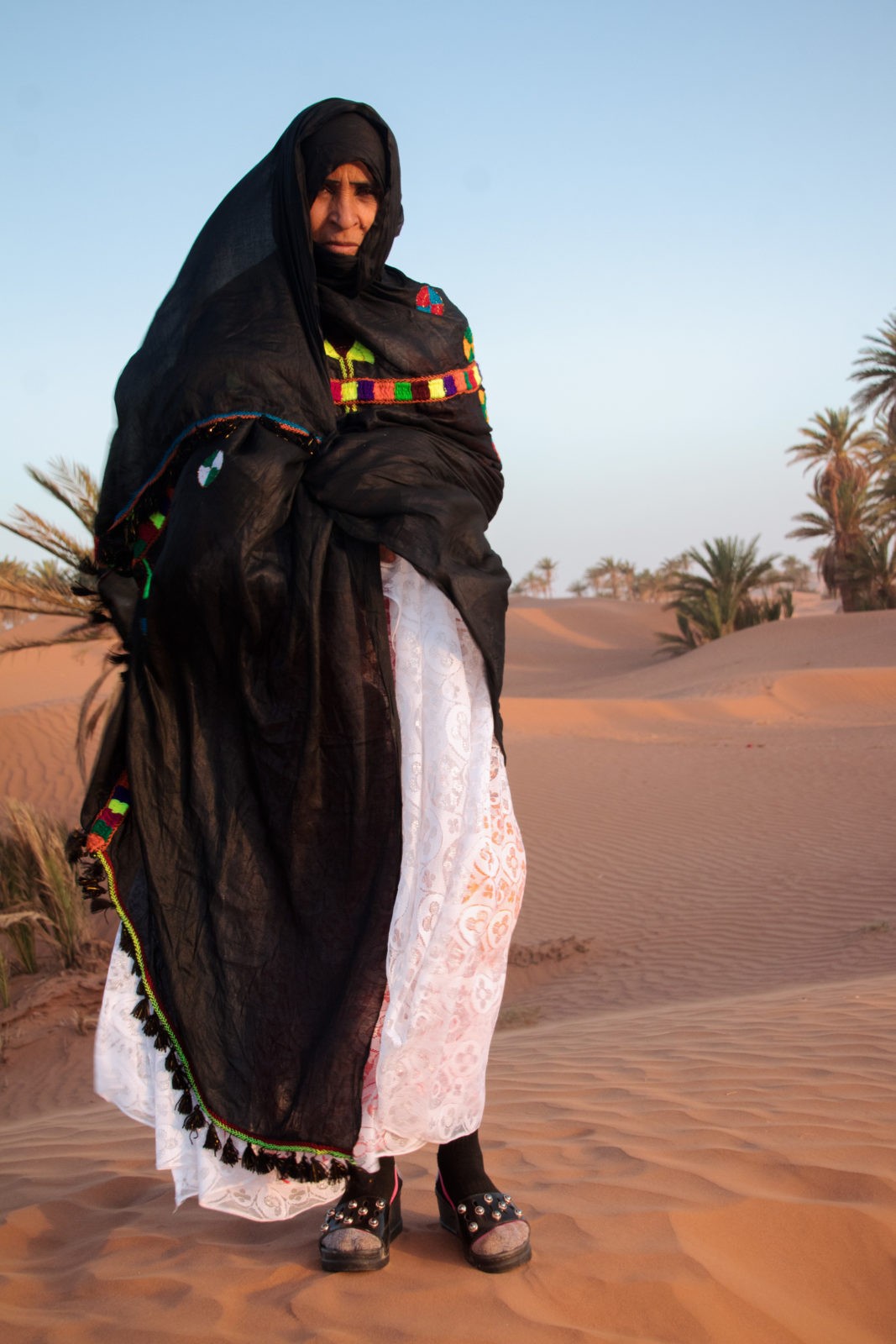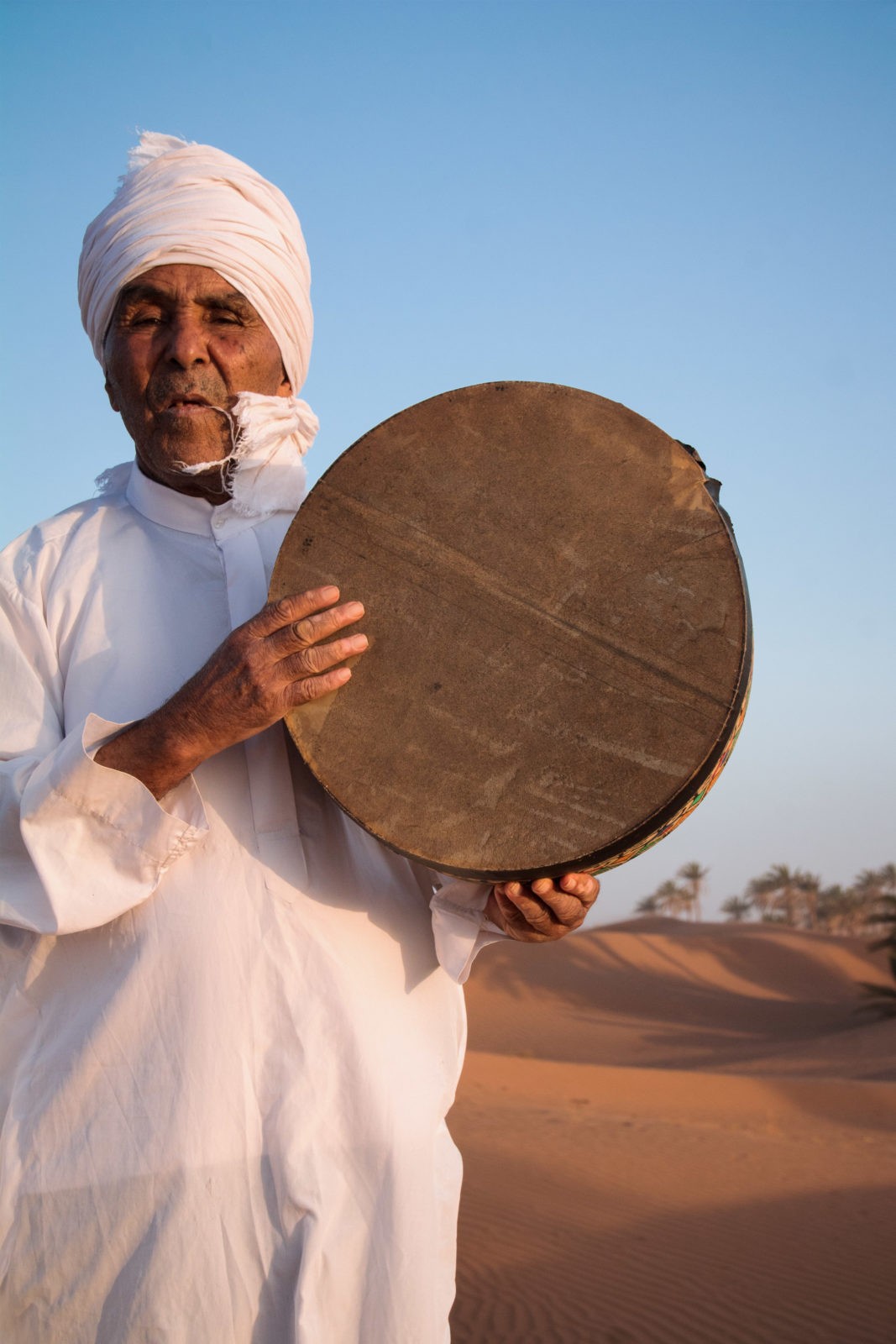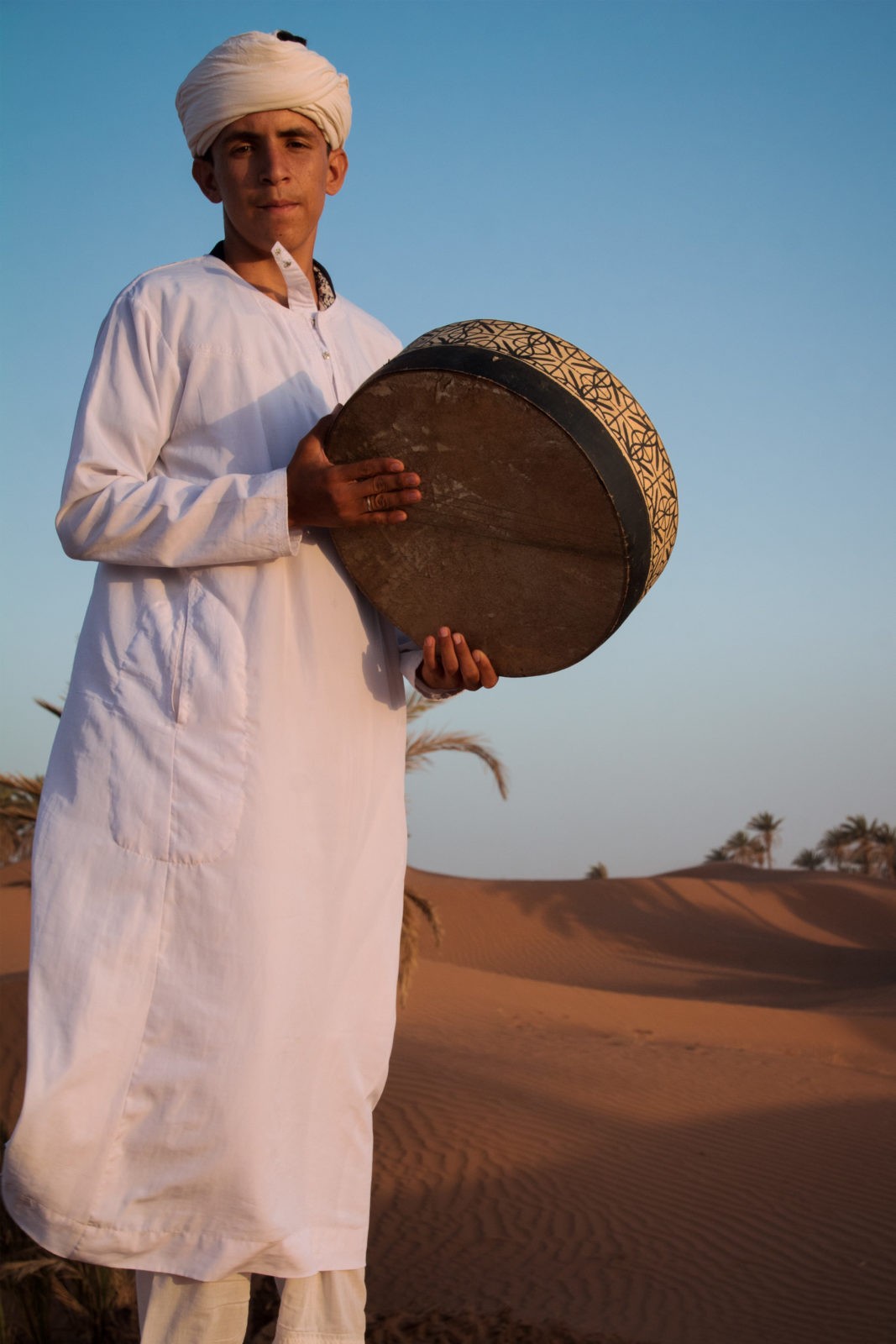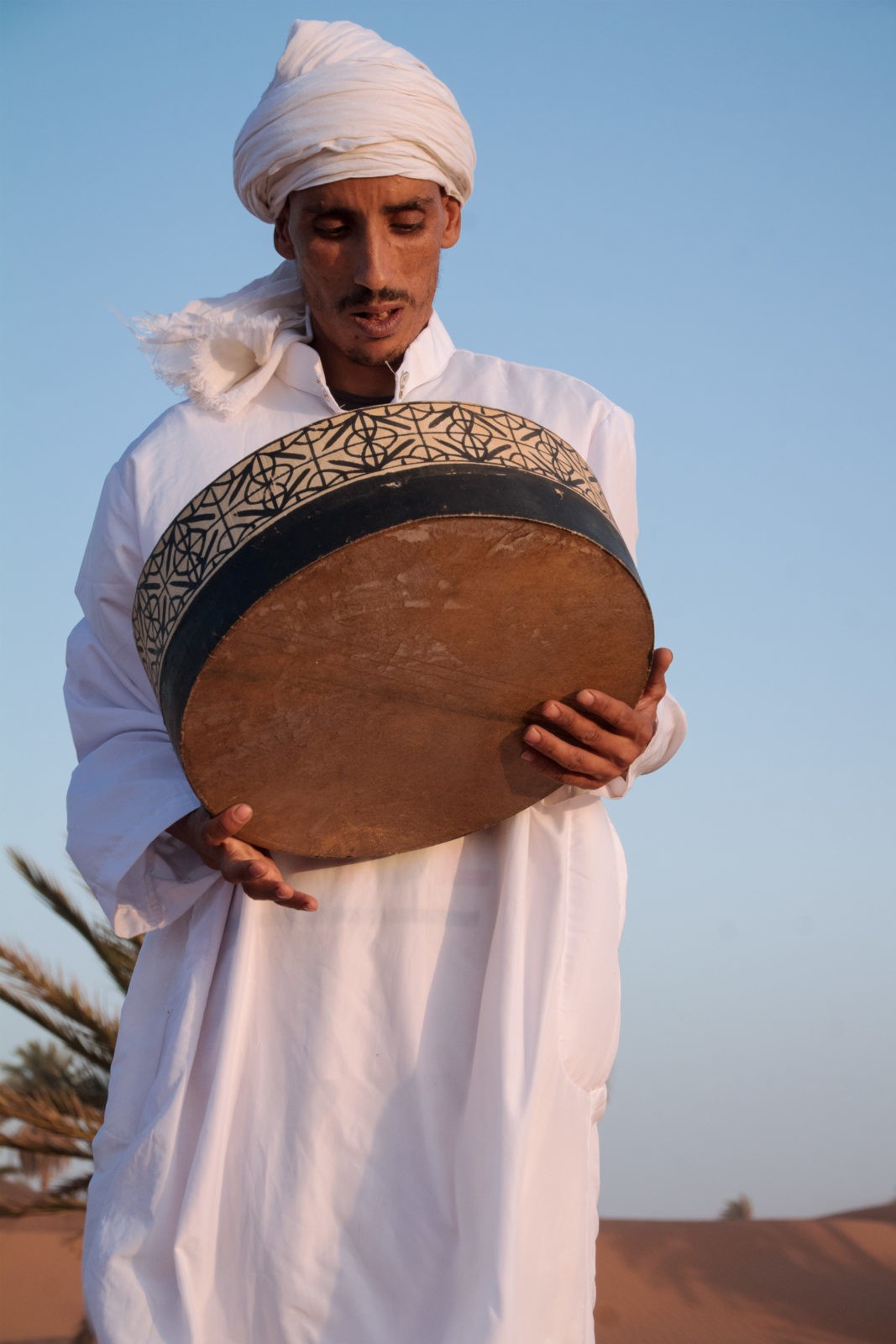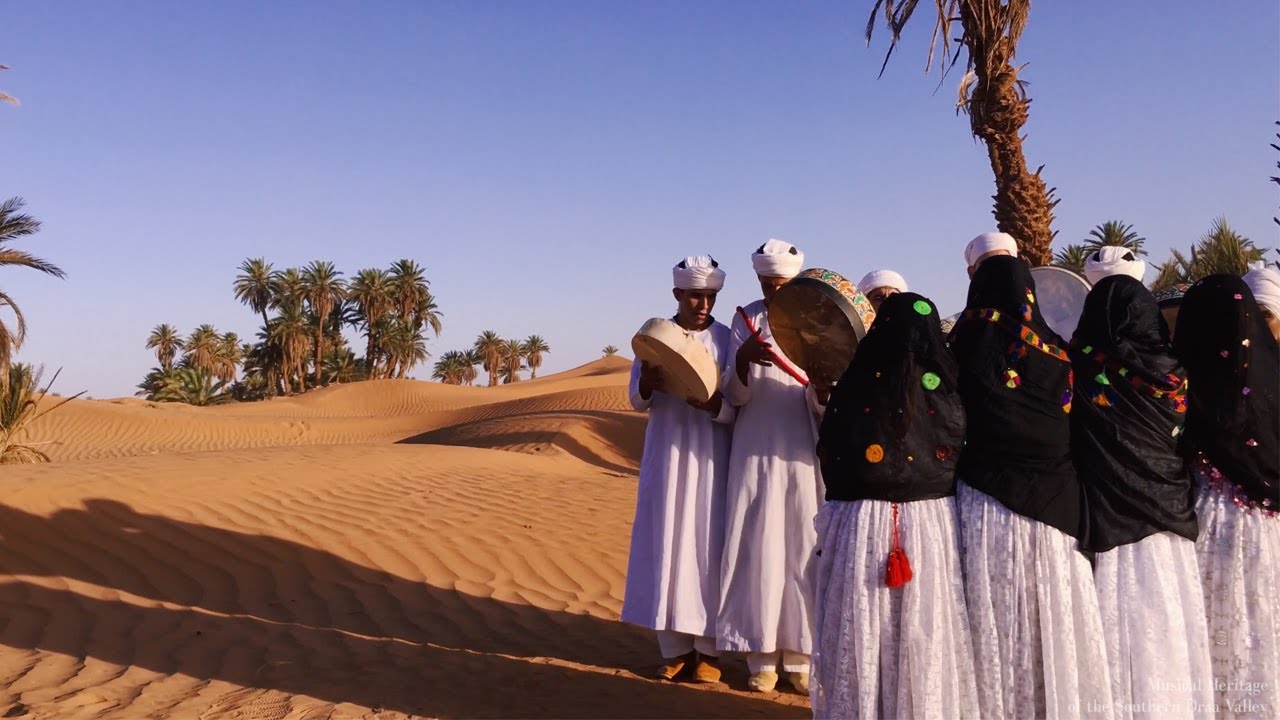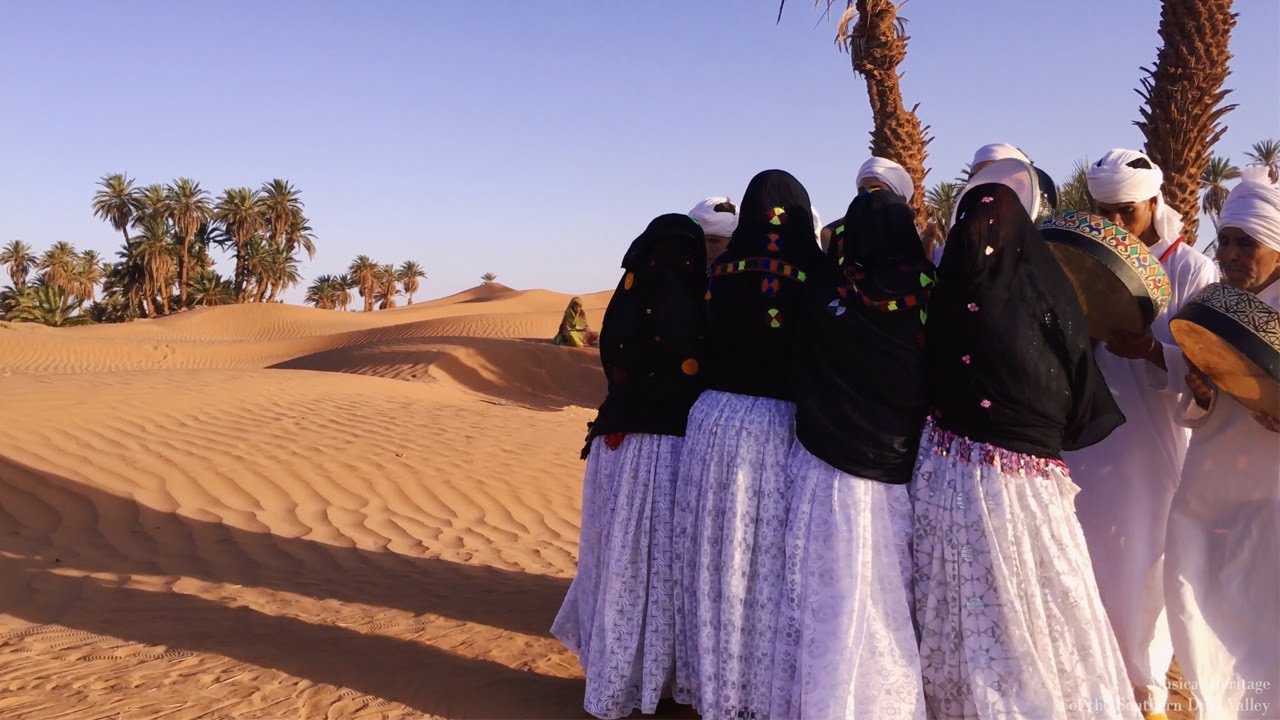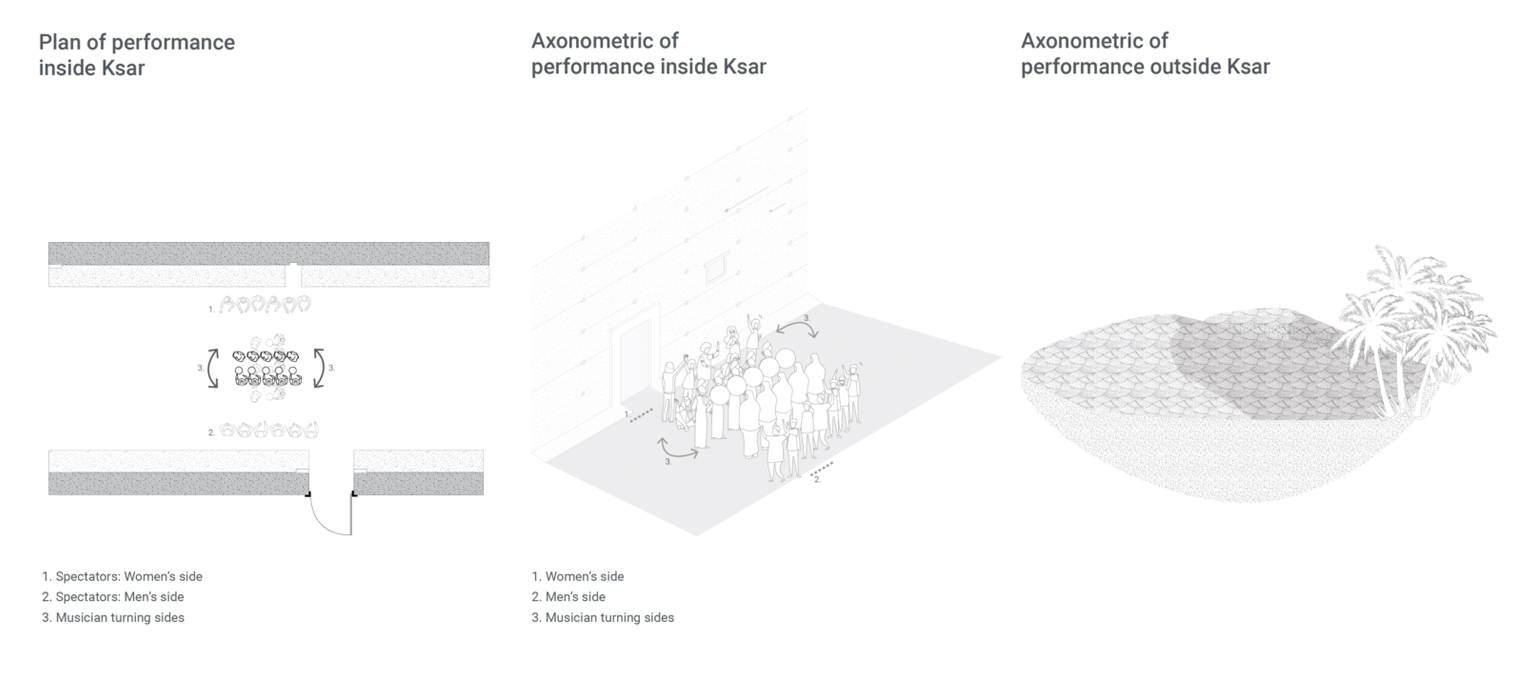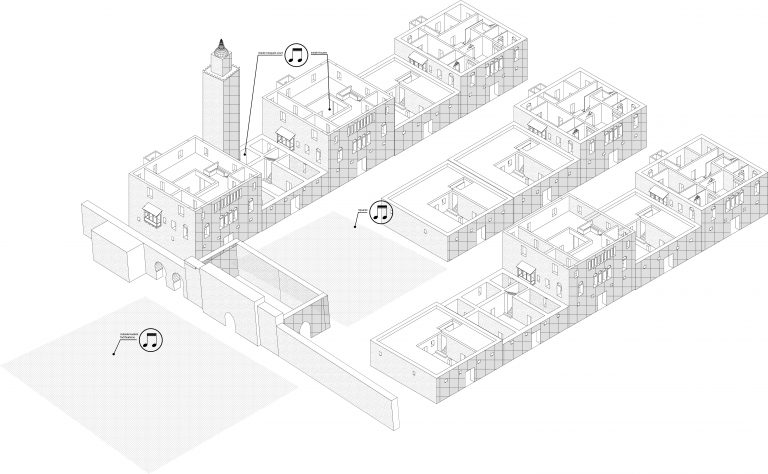Context
The Amazigh people of North Africa are said to have been living on the continent for several millenia. Several related languages are spoken among the Amazigh, from Tamazight and Tachelheit in southern Morocco, to Tarafit in northern Morocco, and Tameshaqt among the Amazigh Touareg people in Algeria, Mali, Niger, and Mauritania. Throughout most of this history – up until colonization and the closing of the Moroccan/Algerian border – the Amazigh people lived nomadically, and in the northwestern Sahara desert, where the Draa River meets the desert among the Bani Mountains and Kem Kem beds, and into the Hamada Draa desert, the Ait Atta, Ait Ghanima, and Ait Ouanzar Amazigh tribes have been performing Ahidous music wherever they have roamed. Ahidous can best be described as a pastime – a defining cultural characteristic that brought men and women and boys and girls together, lining up across from each other outside their encampments, moving at times in unison and at times separately, calling and responding, singing about the human experience as lived in the desert, about love and heartbreak, about their relationship with nature, and their relationship with God.
Since colonization and the establishment of the town centers of Tagounite and M’hamid El Ghizlane outside the oases of Ktawa and M’hamid, the Amazigh people have migrated from the surrounding mountains and desert into these town centers. Ahidous music survives as a reminder of a nomadic heritage and an invaluable cultural relic, indistinguishable from local Amazigh identity.

